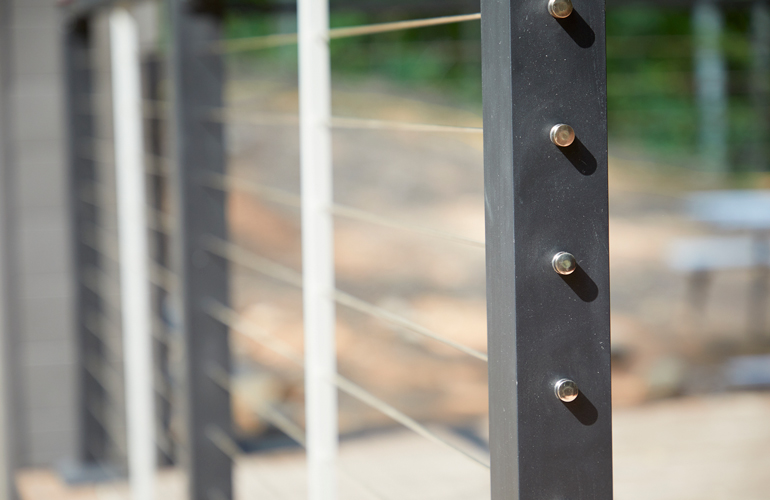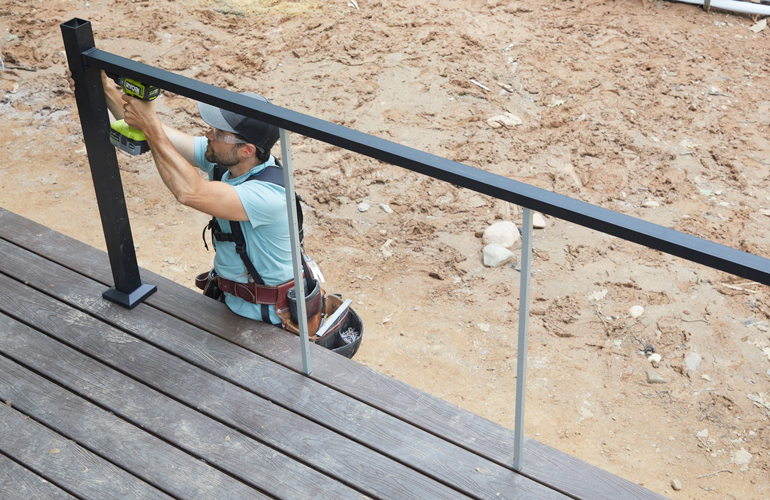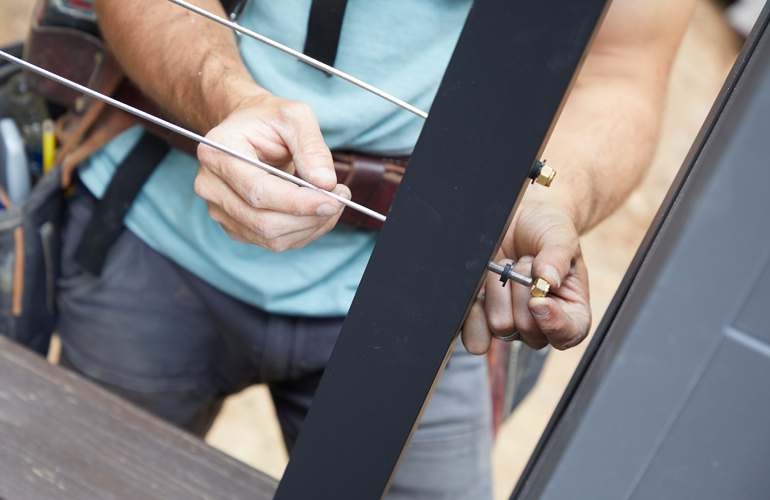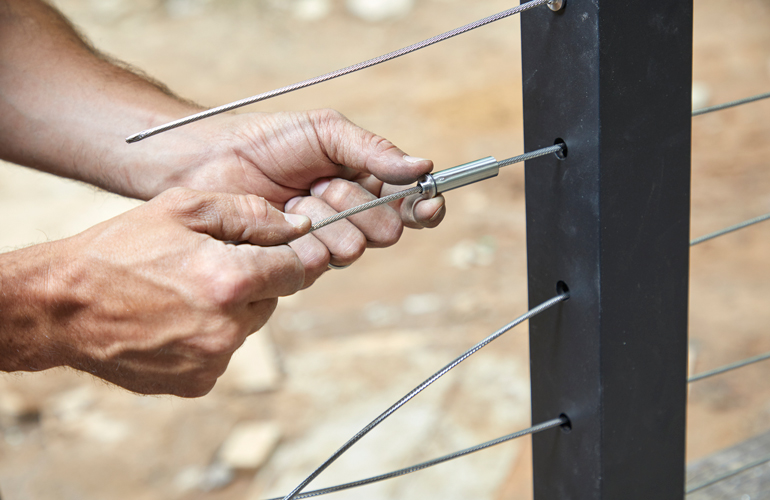Post-to-beam connection
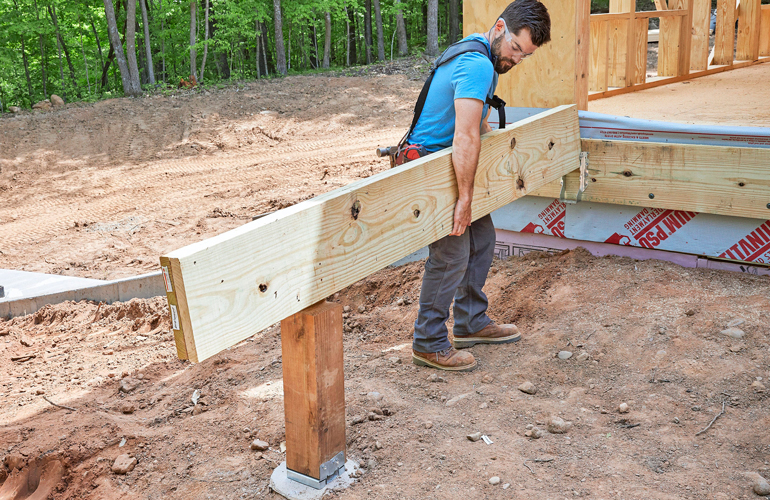
The one component of a deck that gets messed up most often is the post-to-beam connection. Often the beam is slapped on the side of the post and they are bolted together. This is not good enough; the post, not the bolt, needs to bear the weight of the beam.
Instead, make a notch in the post to fit the beam. Use a 13mm through bolt or easy-to-use screw bolts made for this type of connection.
Installing the rim joist
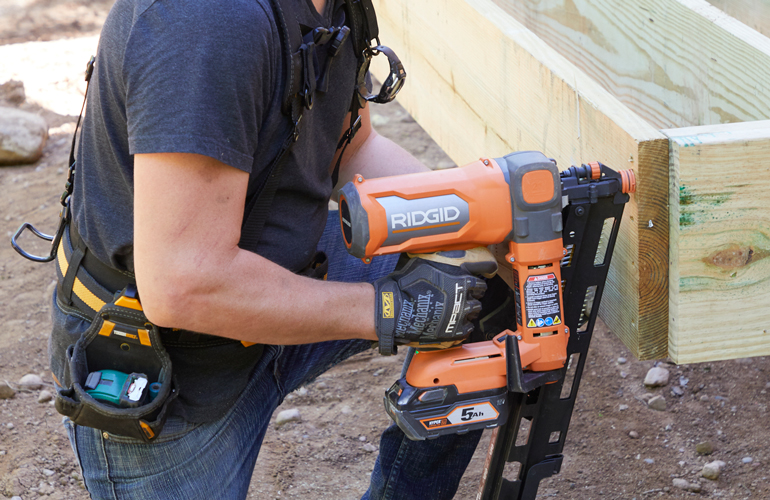
After the joists are installed, a rim joist holds them upright and keeps their spacing consistent. Unlike the other joists, the rim joist carries no load and is simply held in place, flush with the top and nailed to the ends of the joists.
Choose composite decking
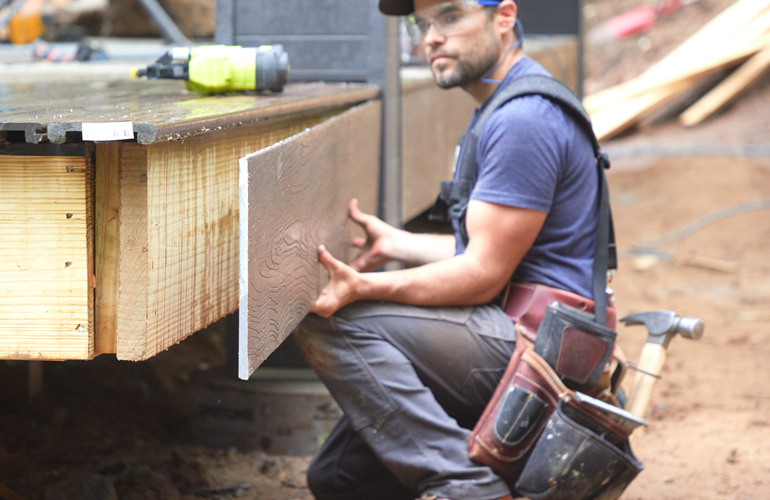
After building a solid, long-lasting deck frame, it’s time to install long-lasting deck boards. I chose Deckorators’ Tropics line of decking. The composite material will last for decades maintenance-free, and the colour and grain pattern give it the appearance of high-end exotic wood. Be sure to carefully follow the specific instructions of whatever deck board fastening system you choose for your deck.
Check out this video: How to Build A Deck Part 4: Laying Boards


